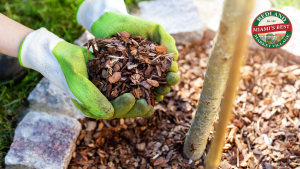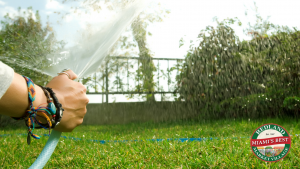Across the country, the heat is on. To keep your grass or your garden alive during the summer heatwave without driving your water bill to new heights, follow these tips.
Choose the Right Tool
A standard garden hose and nozzle is the least efficient means of applying water to plants because so much water is lost as mist, runoff, and evaporation. Use a soaker hose or a sprinkler wand.
Don’t Over Water
For most Americans, a good rule of thumb is that a lawn needs 1 inch of water a week and perennial plants and shrubs will need from 1 inch to 2 inches a week. There’s no neat rule for watering annuals, so your best guide is always the plant tag (the small spear-shaped plastic tag that came with the plant when you bought it). It will tell you the sun, soil, pH, and water requirements.
Don’t Waste Water
Don’t soak the plant’s foliage; it does little good. And don’t apply water outside a shrub’s or a perennial’s root zone. A shrub’s root zone is roughly 1 Ω to 3 times the diameter of its canopy, and keeping the water inside this radius will allow it to soak down to where the plant’s roots can reach it. If you see water puddling or running off, stop; let the water soak in before resuming. Likewise, water that runs off your lawn or off the top of a flower bed onto paved surfaces does no good. The same applies to running lawn sprinklers: Water your lawn, not the side of your house or the driveway.

Make Sure Mulch Doesn’t Crust Over
Mulch is great for holding in moisture and keeping the base of plants cool. However, a thick layer of mulch can also form a crust that prevents water from soaking in. Break up crusted mulch with a rake to allow water in.
Test for Moisture
You can buy a tool to gauge your soil’s moisture level at a nursery or through a horticultural supply catalog. But if you don’t have one, a large straight blade screwdriver is a good standby. Poke it into the soil; the drier the soil, the more resistance you’ll meet.

If You Can, Water in the Morning
If you water while it’s (relatively) cool outside, water can soak in before it evaporates on the surface. And if you do it in the morning, that helps the plant to take up the water during the day. Watering at dusk or even during early evening is OK, but you run the risk of fungus formation because these organisms love dark and damp places. Plus, the darkness can make it hard to see what you’re doing (and, as noted, precision counts even when watering your plants).
Focus on the Front
The front of the house plays the greatest role in determining its curb appeal and value. If you’re worried about conserving water or find yourself underwater restrictions, worry about the front lawn first and let the rest of the lawn take care of itself.

Use Cool Water
Don’t use a hose that’s been coiled up, filled with water, and sitting in the sun all day. That coiled hose can act like a water heater, and hot water stresses sensitive plants. Store your hose in the shade. If you can’t, at least run out the heated water before giving your plants a drink.
Water at Widely Spaced Intervals
With your lawn and perennials, it’s better to give them larger amounts of water at longer intervals than it is to apply small amounts of water frequently. That’s because shallow watering encourages shallow rooting. In very hot weather, a ballpark range for watering is every other day for perennials and every three to four days for shrubs. Again, make sure to monitor the soil moisture.
Water annuals and container plants as needed. Since container plants can’t draw moisture from surrounding soil, it’s crucial that their soil remain moist (but not wet).
Courtesy of www.popularmechanics.com




